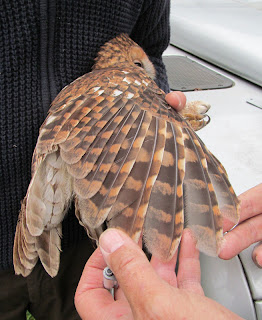Pages
- Home
- May 25
- Apr' 25
- Mar' 25
- Feb' 25
- Jan' 25
- Dec' 24
- Nov' 24
- Oct' 24
- Sep' 24
- Aug' 24
- July 24
- June 24
- May 24
- Apr' 24
- Mar' 24
- Feb' 24
- Jan' 24
- Dec' 23
- Nov' 23
- Oct' 23
- Sep' 23
- Aug' 23
- July 23
- June 23
- May 23
- Apr' 23
- Mar' 23
- Feb' 23
- Jan' 23
- Dec' 22
- Nov' 22
- Oct' 22
- Sept' 22
- Aug' 22
- Jul' 22
- Jun' 22
- May 22
- Apr' 22
- Mar' 22
- Feb' 22
- Jan' 22
- Dec' 21
- Nov' 21
- Oct' 21
- Sep' 21
- Aug' 21
- Jun' 21
- Jul' 21
- Mar' 21
- May 21
- Apr' 21
- Feb' 21
- Nov' 20
- Jan' 21
- Dec' 20
Welcome to the LDV NNR ringing blog, this blog is designed to share the experiences, findings and tales from a group of dedicated ringers. We specialise in conservation orientated research projects, largely focusing on wildfowl, waders, owls and birds of conservation concern, in and around the Vale of York NNR's.
NB - Whilst the purpose of this blog was initially designed to cover our nationally important wildfowl ringing activities, it now also features wildlife and work posts, explaining how we manage the NNR for both wildlife and people.
For daily sightings please visit our Twitter account: https://twitter.com/ldv_nnr (@LDV_NNR)
For details of events, volunteer tasks and wildlife images please visit our Facebook account: https://www.facebook.com/Lower-Derwent-Valley-Skipwith-Common-NNR
Thursday, 8 November 2012
05/11/12 - Spring forward...die-back
As a result the group thought it would be interesting to undertake a colour-ringing study on these birds as the population grew - where were they coming from, where were they going and how would the population spread etc. However the first harsh winter of recent years (2010/2011) wiped out the birds with just a single record the following year, and again, following another cold winter, no records until 3 turned up on Skipwith Common last week. A couple of spring traps were baited with mealworms and only a few minutes later a superb first winter male became the first to be colour-ringed as part of this project - and only the fourth to be ringed in the area. With colour-rings so easy to see on these long legged and conspicuously perching chats we hope to get some data back. This also just goes to show how effective spring traps can be for certain bird species.
Working at Thornton Ellers last week gave the opportunity to check on a known owl roost in a natural tree hole during a well earned lunch break - the morning had been spent ploughing through bracken.... The tree hole is a well sought after spot which has supported Barn Owls, Tawny Owls and Jackdaws as both breeding birds or winter roosting individuals. This time the inhabitant was a beautiful adult female Tawny Owl, and surprisingly it was un-ringed. How many individuals have roosted in this hole for the last 10 years or so we wonder?? The tree is an Ash, the species under the spotlight at the moment, and just goes to further reinforce how disasterous the new Ash die-back disease could be for hole nesters like these as well as a range of other wildlife.




.JPG)

No comments:
Post a Comment